Lands of the Yachats
Caution! We do not provide turn-by-turn directions in our GPX files. Those are auto-generated by your bike computer and are usually less than 70% accurate. Learn more.
For help loading a GPX file onto your bike computer, go here.
DownloadHighlights & Remarkable Spots
Yachats (the town) / Mile 0
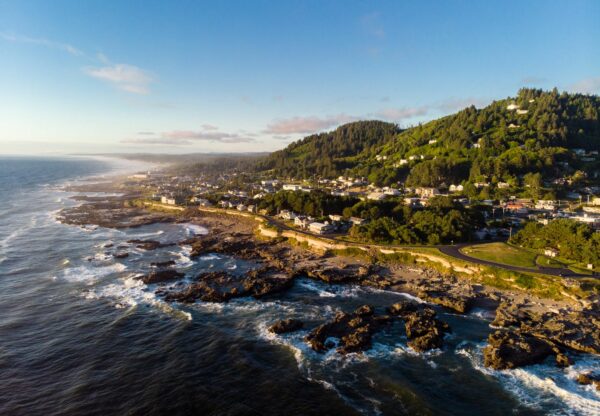
Today, Yachats is considered the “gem of the Oregon coast” with its jagged shoreline, massive wave breaks, and upscale restaurants and hotels. However, Yachats’ early history, circa the 1800s, is filled with a litany of atrocities against the local native people. White settlers, seeing the value in fishing, mining, and timber, forced the hunter-gathering tribes onto small patches of land just inland to exist by farming alone. Numerous records give grim accounts of entire villages emptied by white man diseases or forced starvation.[The Yahacts Indians, Origins of the Yachats Name, and the Prison Camp Years]
Yachats River / Miles 0 to 5
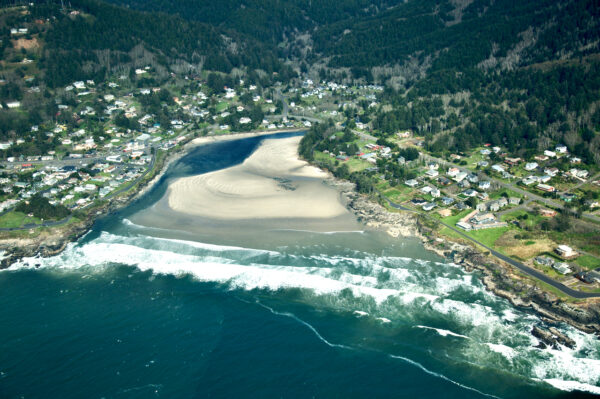
The Yachats River flows through the Coast Range for about 12 miles and has a watershed of 27,760 acres. The name is derived from the native American Indians of the Alsea people meaning “dark water at the foot of the mountain”. The Alsea were hunter-gatherers who migrated between summer camps and winter residences. The mouth of the Yachats River was used to access seals, sea lions, salmon, and smelt.
Coast Range Forests / Miles 5 to 26

The forests here are primarily dominated by Sitka spruce, Douglas Fir, moss, and lush ferns. Old growth (where the upper canopy is dominated by trees over 200 years old) covered an average of 48% of the Coast Range over the past 3,000 years and forests containing trees greater than 80 years old covered an average of 71% of the forest. Today, old growth makes up ~15% of the forest and trees greater than 80 years old make up 35% of the forest. Or put another way, in the last 125 years old growth forest have decreased by ~ 70% and forest with trees greater than 80 years old have decreased by ~50%.
Mature Forest Example / Mile 5.25 (Look right)

Mature forests (forests about 80 to 200 years old) have some elements of old-growth character, including larger diameter trees (20″ or greater), trees devoid of lower limbs, more spacing, and dead tree fall. Mature forests, with time, become the next generation of old-growth forests.
Elk Refuge / Mile 28.5
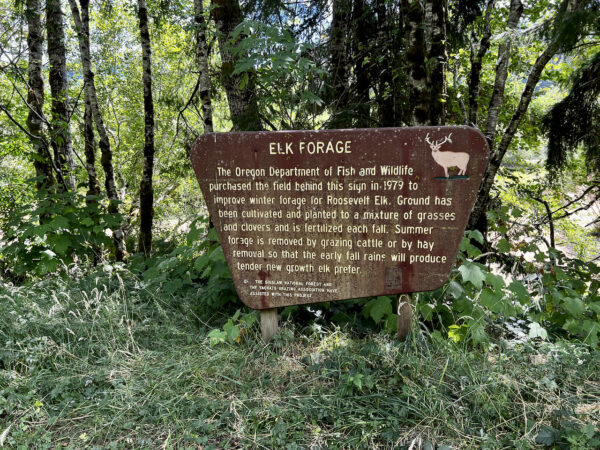
The Oregon Department of Fish and Wildlife purchased the land behind this sign in 1979 to improve winter forage for Roosevelt Elk. The ground has been cultivated and planted with a mixture of grasses and clovers and is fertilized each fall. Summer forage is removed by grazing cattle or by hay removal so that the early fall rains will produce tender new growth that elk prefer.
804 Trail / @ parking area
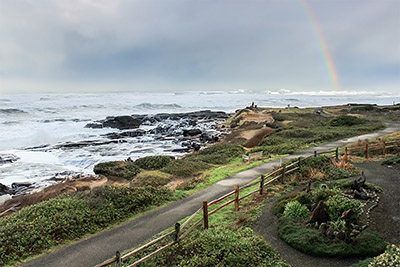
This 1.7 mile trail – which some archaeologists say could be around 3,000 years old — served as a pathway for people of the coastal tribes. In the late 1800s, it became part of County Road 804, the settler’s route of travel from the farmlands of the upper Yachats River valley to Waldport’s Alsea Bay to the north. The road included a 7-mile stretch of beach that was passible only at low tide. In the 1930s, Road 804 was relocated to the present day highway location. Start and parking at Lat / Long: 44.321944, -124.105648
Credits & Acknowledgements
This route is a variation of the Son of the Abomination route by Mudslinger Events. The route here avoids riding Highway 101 and private property issues.
This ride guide is funded in part by the Oregon Coast Visitors Association.
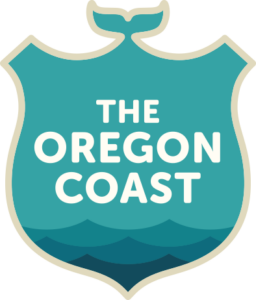
When We Like to Ride This
This route goes most of the year due to the temperate climate of the Oregon Coast. But, go when it is sunny! We like this ride as the perfect escape from the summer heat of inland Oregon. Those 90 to 100+ days.
Terrain & Riding
Leading out on the stick of the lollipop (miles 0 to 5 and 26 to 35), the route follows the Yachats River. Good pavement, light traffic, the road rolls up and down through a mix of agricultural lands and pockets of big 200+ year old tress.
At ~ mile 5, you turn left onto a skinny, skinny unmarked gravel road that feels like a driveway. Get ready to climb. This is the first climb of two for the day. 1400 feet in 5 miles, an average gradient of 5.5%. The first half is the steepest, with an average gradient on 7%.
The riding is deep within the Coast Range Mountains. Rarely will you have vista views. These lands have been logged timberlands since the early 1900s. You will experience a mix of forest types ranging from developing mature forests (80+ year old) with tall mossy trees to relatively new cuts and young, tightly packed trees. The trees are a mix of Sitka spruce and Douglas Fir.
The second climb (paved) begins at ~ mile 14.5. 1000 feet in just over 3 miles, with an average gradient of 6%. The descent from the summit is so fun! A two-step descent with a runner in the middle of ~ 3.5 miles that undulate up and down. This road is super skinny and a bit overgrown, giving it an exciting (“what is around the next corner”) type of fun.
Overall, the gravel is solid and hard-packed. Along the loop portion of the ride (miles 5 to 26), you transition several times between gravel and old logging road pavement. Use some caution on the pavement; it can be cracked, dipped, and rutted. The climbs and descents have several short sections where the gradients exceed 13%.
Within the coast range here, the temperatures are moderated by the ocean area for as far as 20 miles. Plan your clothing accordingly.
The Start
Paved parking lot at the Yachats State Park. Flush toilets.
Food & Water
- None
Route Notes
Rides good in both directions. The counterclockwise direction gives a nice long downhill on pavement, but the climbing for the day is then backloaded. Exercise caution on paved descent: dips, breaks, and ruts.
You may encounter active logging operations. Please let logging trucks pass by stopping and putting a foot down. When you first hear them, it is best to find a safe pull-out and wait until they pass.

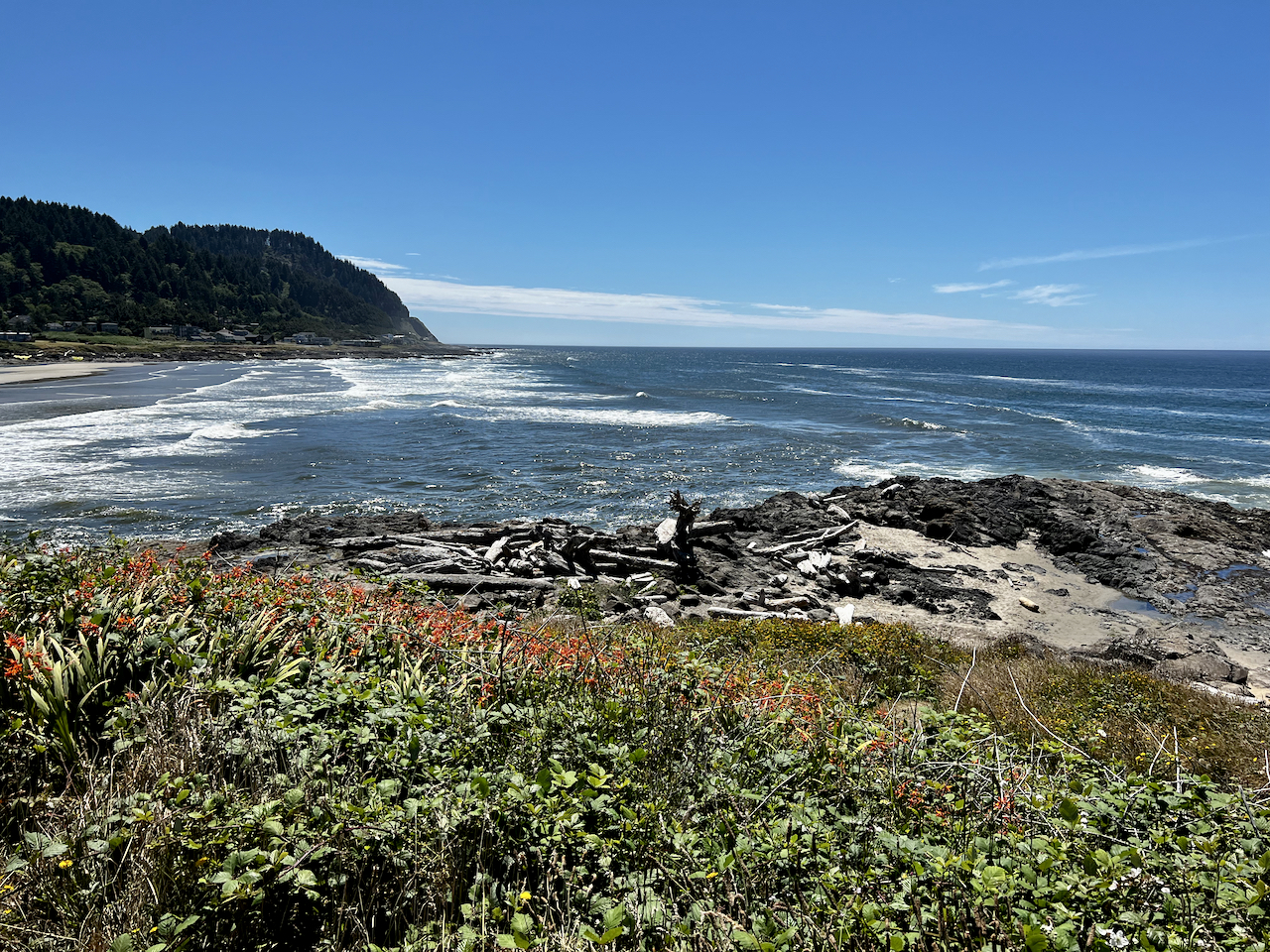
























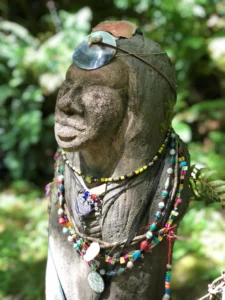 “Oregon’s history with the First Nations remains an often overlooked part of the state’s checkered legacy. But more and more, Native Americans and their supporters are highlighting aspects of Oregon’s pioneer era that may not jibe with tourist signs and old school textbooks. One story is that of Amanda Du-Cuys. U.S. soldiers put the Coos Indian and others on a forced march up the coastline in the 1860s.” [
“Oregon’s history with the First Nations remains an often overlooked part of the state’s checkered legacy. But more and more, Native Americans and their supporters are highlighting aspects of Oregon’s pioneer era that may not jibe with tourist signs and old school textbooks. One story is that of Amanda Du-Cuys. U.S. soldiers put the Coos Indian and others on a forced march up the coastline in the 1860s.” [
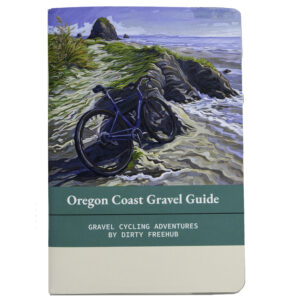


 Behind every route is scouting, mapping, storytelling, and a whole lot of pedal power.
Behind every route is scouting, mapping, storytelling, and a whole lot of pedal power.
Have you ridden this route? Got a question? Join the discussion!